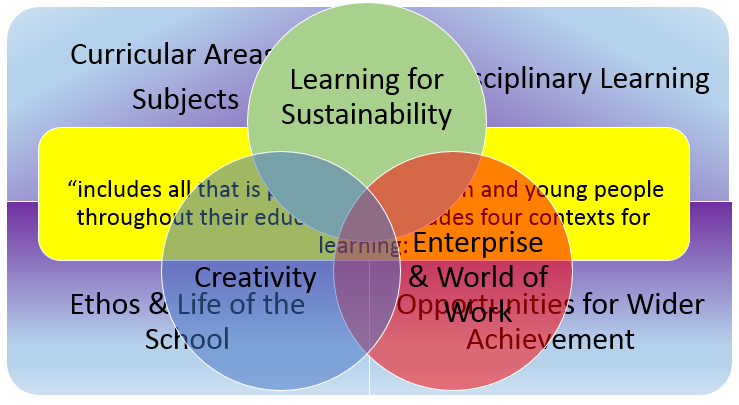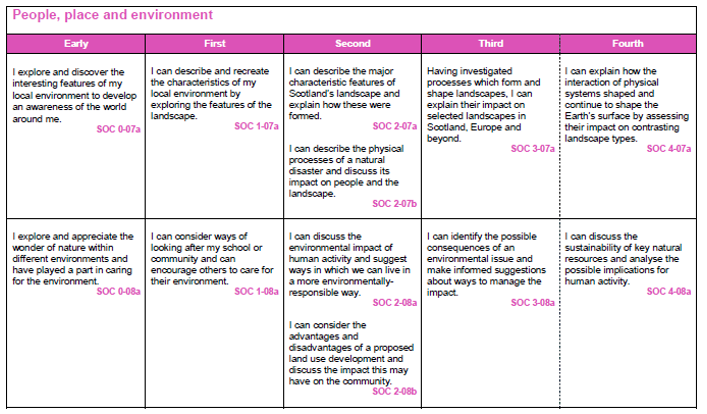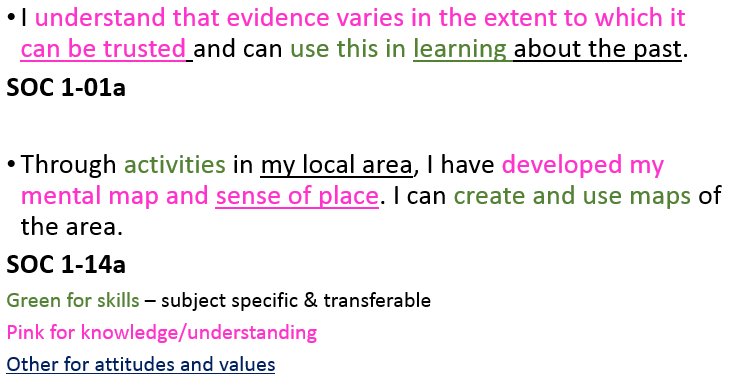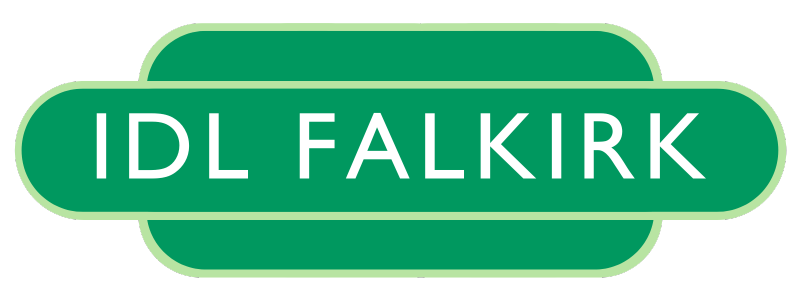
Interdisciplinary Learning in Falkirk Council primary schools is evolving in response to the advice received from our Chief HMIE in August 2016:
- Group E & Os together in ways which best suit learners.
- Prioritise literacy, numeracy and health and wellbeing across the curriculum to ensure that all learners make the best possible progress.
- Plan interdisciplinary learning (IDL) to make natural links across learning. Be aware of what is happening in other subjects and make connections.
- Do not spend time on IDL which does not provide opportunities to apply and deepen learning or is contrived
- When planning learning, teaching and assessment, E & Os are grouped or bundled together
- Enable pupils to see the natural connections within their curriculum
Focus on few, carefully selected E & Os - Use skills as the link to give pupils a task, problem, or big question
- Design IDL as an opportunity for pupils to apply learning in an unfamiliar context
Yvonne McBlain has been working with teachers and senior leaders across Falkirk Children’s Services to explore how to: “not spend time on IDL which does not provide opportunities to apply and deepen learning or is contrived.”
Education Scotland CfE A Statement for Practitioners from HM Chief Inspector of Education, August 2016

In response to self-evaluation of their curricula, some senior managers and practitioners want to improve progression of learning through the IDL context of their curriculum. Specific professional learning activities are proving valuable to help shift our planning focus away from topics towards broader groups or bundles of experiences and outcome which are interdisciplinary across all levels i.e. are progressive AND are linked by the skills, knowledge or content that they progress.
Yvonne McBlain is working on a series of digital files which will explain this process in more detail. However, in the meantime, click here to view her latest Power Point presentation about interdisciplinary planning. The vital starting point for planning of discrete or interdisciplinary learning is thorough understanding of what the experience or outcome requires:

The activity opposite is an example of how 2 social studies E & Os have been analysed/highlighted in pink for knowledge and understanding, green for skills (including transferable skills) and underlining where values or attitudes are a vital part of the learning. Please note that sometimes there is overlap between each of these.
Below you can click on a selection of interdisciplinary plans (in progress) and examine how our schools are beginning to switch their focus from short term planning of IDL topics, to longer term “Umbrella” bundles which have an overarching curricular purpose and :
- Link related E & Os WITHIN subjects
- Link related E & Os BETWEEN subjects
- Include opportunities for APPLICATION of literacy, numeracy and health and wellbeing across learning
- Increase the relevance, breadth, depth and coherence of learning for pupils
- Integrate assessment into their planning
- Retain the capacity to respond to the interests/prior knowledge of their pupils – including the creation of pupil-led planning using this planning format
(kindly donated by Fiona Anderson, HT at Head of Muir PS )
California PS – Local area study early level, first level and second level
Victoria PS – What money means early level, first level and second level
Victoria PS – Winterprise early level, first level and second level

